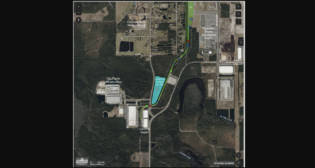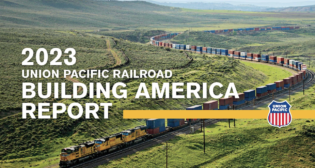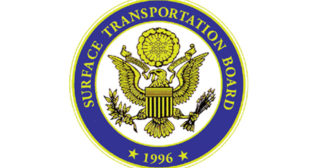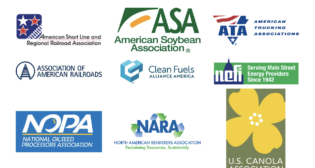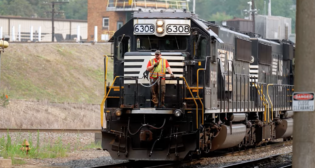
Highlights From the MARS Winter 2024 Meeting (Updated with Alan Shaw Video)
Written by Ron Sucik, Contributing Editor and Principal, RSE Consulting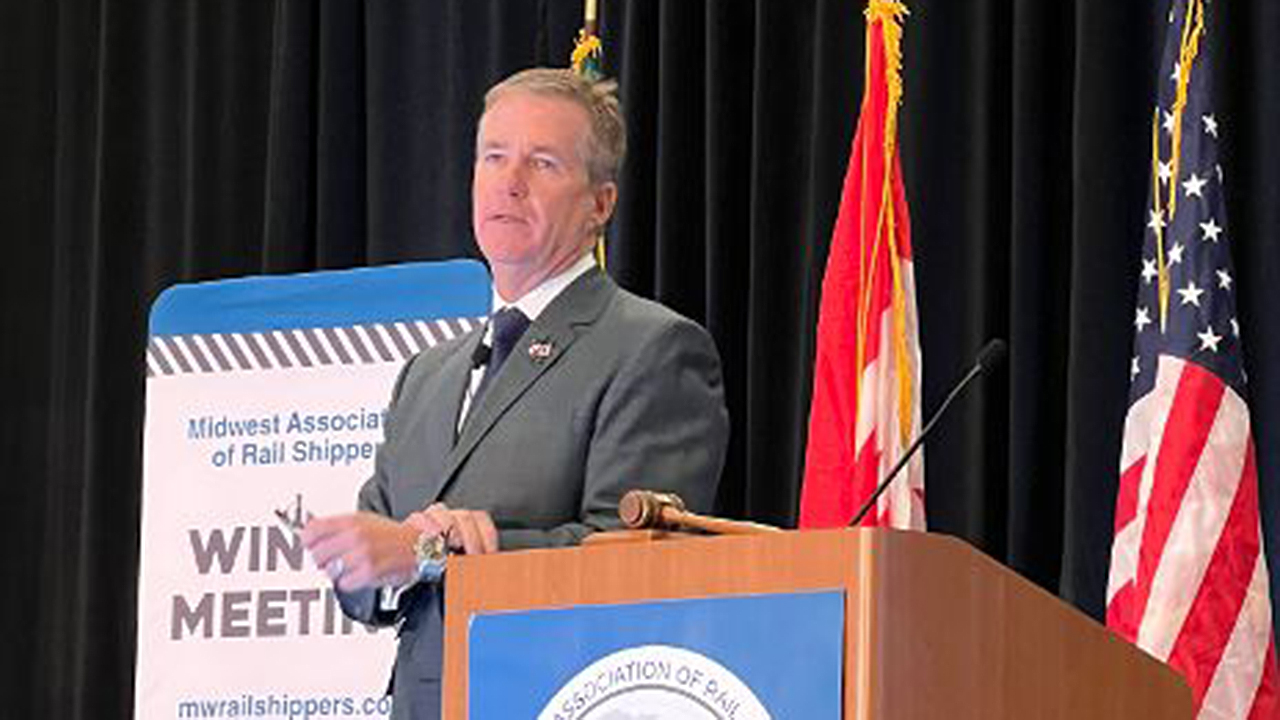
Creation of CPKC has “enhanced competition in the market, stimulating economic growth.” – President and CEO Keith Creel. Ron Sucik photo.
The Midwest Association of Rail Shippers (MARS) at its 2024 Winter Meeting at the Westin Chicago Lombard celebrated its 100-year anniversary with an attendance of 940, exceeding last year’s record-setting level. The thirst for information presently occurring in the rail industry was evident in the numbers. Once again, the main theme of presenters focused on safety, efficiencies, growth and employee relations. Given the rail accidents of the past year, safety came up often, but the labor issues of 2022 resulted in more frequent comments about employee relationships.
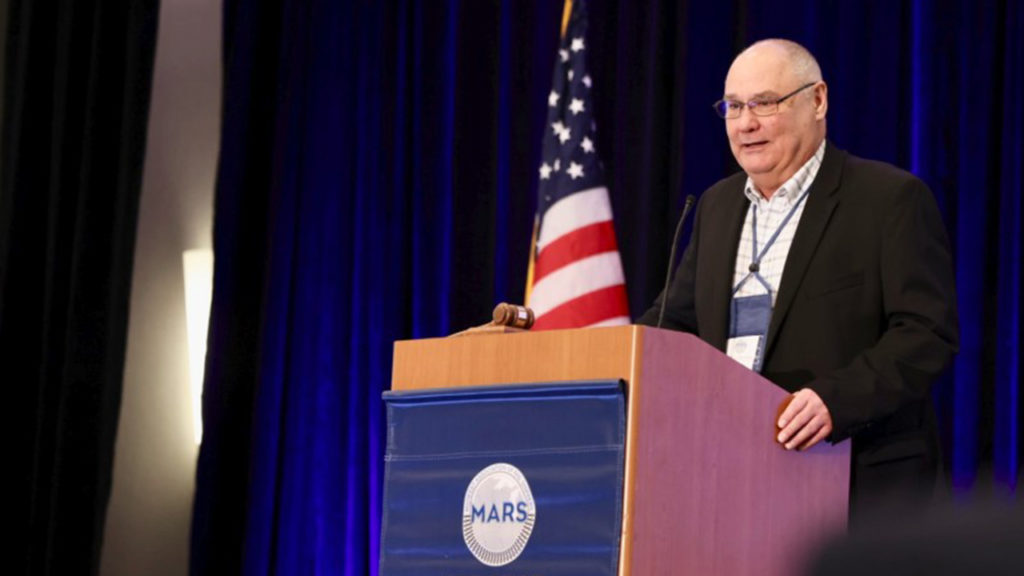
MARS opened the conference with Past President and Executive Board Member Craig Longardner, Retired Corporate Director – Logistics at Steel Dynamics, Inc. (above), giving a brief history of the organization’s 100 years.
Independent analyst Tony Hatch introduced and moderated the keynote session with CSX President and CEO Joe Hinrichs. Coming from the automobile industry, Hinrichs said the railroads shouldn’t be comfortable with just keeping status quo. Railroads are better working together than being the single player looking for the higher margin. The railroads can all cooperate in their joint services and be an even bigger participant in helping the environment, economy customers.
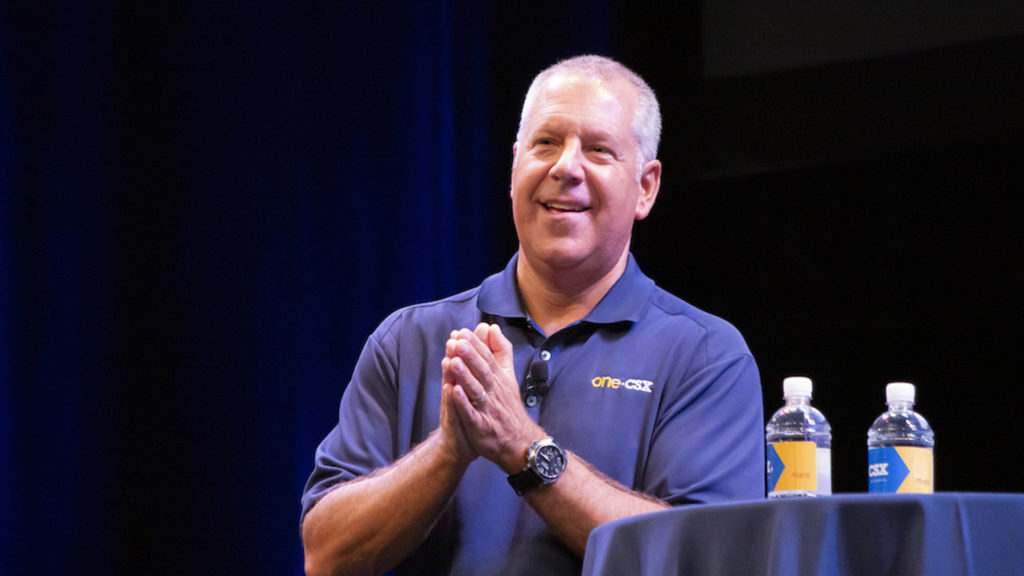
Hinrichs noted that there are multiple shipper associations; he has never used that term and always viewed them as customers. Product movement is the value railroads provide. The goals should be reliable service, being a better partner with the customer and lowering costs, resulting in being better for the environment.
Regarding recent rail labor negotiations, Hinrichs said that employees are responsible for the movement of those products, should feel proud of their contribution, and deserve a safe and efficient operation and proper compensation. Employees used to come from multi-generation families, but this has changed in the past 10 years. Family members now say “don’t come to work here. We have lost that generational thing, and we need to regroup. If you care about employees, you must be connected to them in some way.” Hinrichs often visits sites unannounced and has conversations with employees.
The short line panel reinforced small railroads’ importance to the industry by noting how many of the 600 Class II and III carriers offer unique industries or services that otherwise would not have been able to use the nation’s rail system without their connections. While many short lines were created through Class I spinoffs, their importance has led to some reacquisitions (Montana Rail Link, for example). The first-mile/last-mile connection will always be important. In the case of short line customers, when things go wrong the phone call often goes directly to the president or owner of the short line.
Union Pacific President Beth Whited as expected began her talk by saying that “UP wins by concentrating on safety, service, operational excellency, and employee relations.” She stressed that UP conducts employee meetings to broadcast and explain what upcoming plans and benefits might result from UP initiatives, among them an aggressive employee stock purchase plan. She went on to review opening of new terminals.
Norfolk Southern President and CEO Alan Shaw participated in a fireside chat with Adriene Bailey, a Partner in Oliver Wyman’s Transportation practice (video below). Shaw focused on “service, productivity and growth,” stressing that NS “has used all three pillars to provide a high degree of reliability and a best-in-class, consumer-oriented customer experience with rail.” NS is also investing in markets that are” poised for growth.” When Shaw meets with customers, he asks, “What do you need from us to support your growth, and important, participate in your growth?” Their answers help NS make strategic investments that yield “smart, sustainable growth. We don’t dictate markets. We respond to markets, we evolve in markets, and we anticipate where markets are headed. We’re creating the foundation and building blocks, so that we can be agile, ready to respond, and evolve with the markets.”
Association of American Railroads President and CEO Ian Jefferies said that in addition to focusing on employee relations and maintenance, the AAR “leads the opposition to California issuing a deadline on locomotive emissions.” California’s regulations “are impossible to meet and would result in most of the state’s short lines shutting down, and the traffic would have to go by truck. This is counterproductive and would result with an increase in carbon emissions and more congestion on California’s highway system.”
The “Rail Ecosystem: Positioned for Growth” session addressed the importance of first-mile/last-mile markets and the importance of maintaining reliable service.
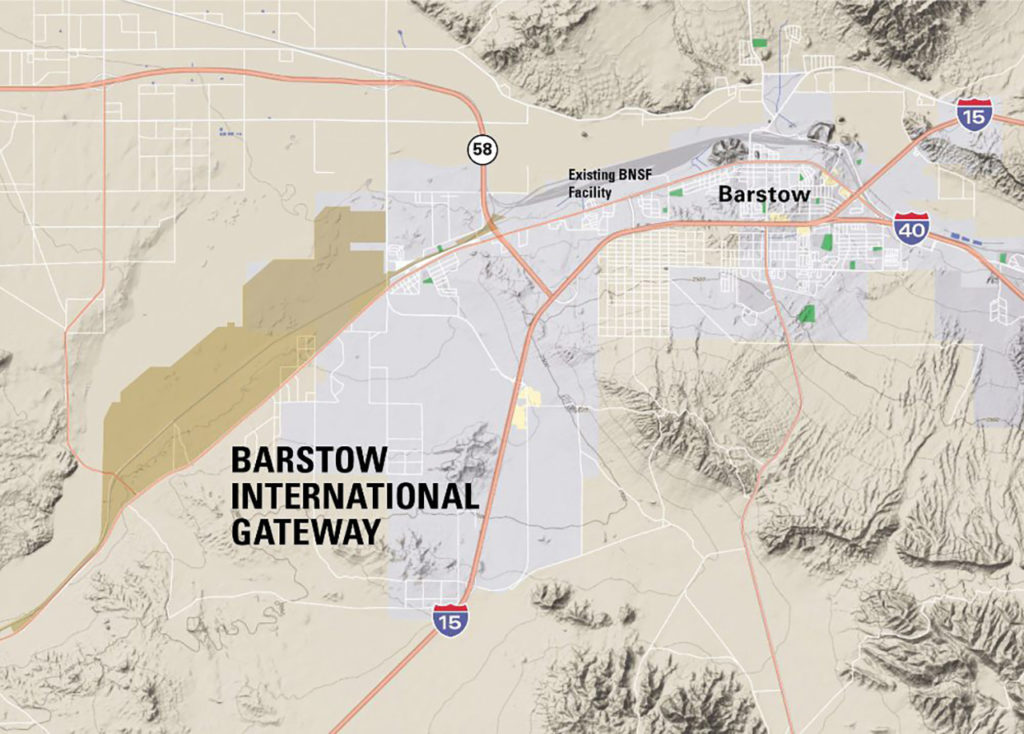
BNSF sponsored an after-session intermodal update. Its BIG (Barstow International Gateway) project team is working on obtaining the necessary permits, and targets opening the new terminal in 2028.
CPKC President and CEO Keith Creel opened MARS day two sessions with his observations on the merger, which on April 14 marks one year. Creel noted it has “enhanced competition in the market, stimulating economic growth.” He highlighted CPKC’s safety status, investments and service opportunities, and credited the Kansas City Southern for the Mexican supply chain infrastructure it created. “This provides a tremendous opportunity for round trip traffic,” he said. Creel pointed out that instead of having to change crews at the International Bridge at Laredo, CPKC has “international crews” that can operate trains to the next terminal at either side of the border.
CPKC management is also visiting terminals across the railroad, “meeting with our people to help them understand what we are trying to achieve and improve,” Creel said. He also comment on the collaboration with CSX to develop hydrogen-powered locomotives.
Continuing the environmental focus, Bunge Senior Manager-Government Elgeo Harris presented on how his company is helping develop and promote introduction of bio-based fuel as alternative to fossil fuel, specifically soy and palm oil.

GATX Executive Vice President and President, Rail North America Paul Titterton gave a detailed presentation on railcar ownership. Titterton broke the national fleet down by percentage of ownership, car type and commodity shipments. “The higher cost of production materials and the interest cost of money will dampen the enthusiasm of new car production, and this could lead to a new normal of tight fleet sizes,” he said. As a solution, Titterton pointed out that intermodal- and transload-based business are not “rail sticky.” Carload-centric supply chains “thrive on long-term contracts with predictable economics, stable fleets and dependable service,” he said. “Every stakeholder wins—shippers, railroads, lessors, the environment and the public. Multi-year contracts and long-term investments support a competitive rail sector. As stakeholders work together to build carload centric supply chains, success begets success, and no party is incentivized to walk away.”
Tony Hatch returned to close out the conference. He reiterated the changes and new programs the railroads have initiated, and whether short-term investors with be happy with the results of these “new experiments.” He pointed to the double-digit growth of nearshore manufacturing shifts and the potential for intermodal traffic increases from Mexico.
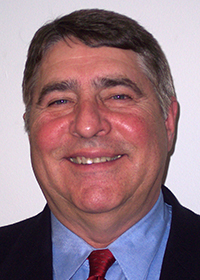
As Director, Market Development at TTX, Ron Sucik established relationships in the industry that include members of the railroads, steamship lines, port authorities, transloaders, 3PLs, motor carriers, intermodal marketing companies, retail industry and real estate development companies. Ron is recognized as having a significant understanding of the trends of trade flows into North America and the affect they have on the rail industry. He is often called upon for his perspective of emerging issues. Ron’s prior experience at Burlington Northern gave him an understanding of the basic operational aspects of the rail side of the intermodal industry as well. He holds a Bachelor of Science in Business Administration and an MBA with emphasis on Marketing from Illinois Benedictine University. Ron remains active within the transportation community as a consultant. He was a major contributor to the CIGMA International Freight Study at the Tioga Group, and continues to make presentations on the issues and trends in the intermodal industry. Ron and his wife Robin live in Naperville, Ill.
